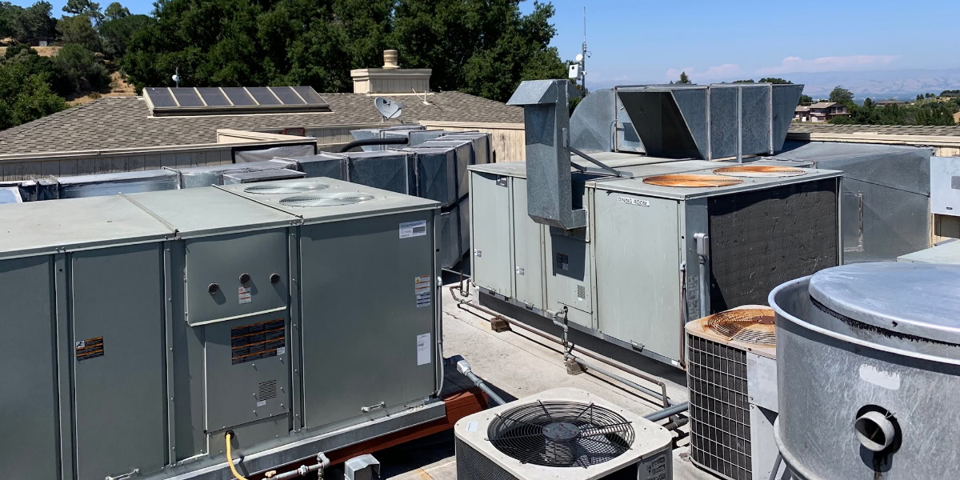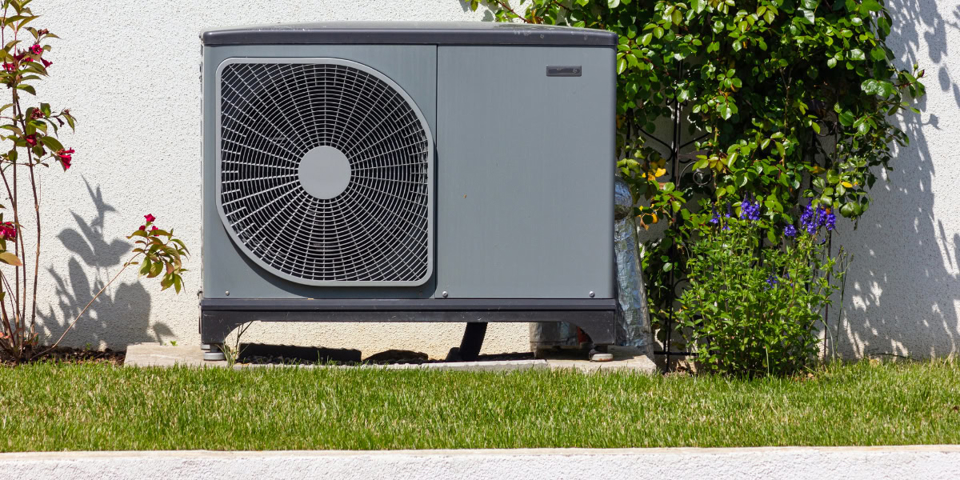Maintaining a comfortable, productive, and safe environment in a commercial space depends heavily on reliable HVAC systems. Among the many options available to businesses, packaged units stand out for their compact design, self-contained configuration, and versatility. Unlike split systems, which separate indoor and outdoor components, packaged units consolidate heating, cooling, and often ventilation into a single enclosure, making them a popular choice for medium to large commercial facilities.
However, installing a packaged unit is far more than simply setting it on a rooftop or placing it on a ground pad. The process involves careful planning around space, structural support, ductwork integration, electrical connections, and operational downtime. Missteps at any stage can lead to uneven heating, inefficient energy use, or early equipment failure. For business owners and facility managers, understanding the nuances of packaged unit installation ensures smoother execution, better system performance, and fewer surprises down the line.
This guide explores the comprehensive process of packaged unit installation, highlighting equipment considerations, pre-installation planning, operational implications, and post-installation maintenance.
What is a Packaged Unit?
Packaged units are self-contained HVAC systems where all primary components—compressors, condensers, evaporator coils, and fans—are housed together. These systems are often installed on rooftops but can also be placed at ground level with proper structural support. The all-in-one design simplifies installation compared to split systems, but it requires precise planning and execution.
One of the most significant advantages of packaged units is their ability to conserve indoor space while providing reliable heating and cooling. They are commonly found in offices, retail stores, small manufacturing facilities, and specialized spaces such as laboratories or data centers. For facility managers, understanding the lifecycle of rooftop HVAC units is vital for long-term planning, ensuring the system meets operational needs without frequent unexpected repairs.
Additionally, packaged units allow for streamlined maintenance, as all components are centralized. Technicians can quickly access critical systems for inspections, repairs, or upgrades, reducing downtime and service complexity compared to split systems that require separate indoor and outdoor unit servicing.
Pre-Installation Planning: Laying the Groundwork
A successful installation begins long before the unit arrives onsite. Pre-installation planning sets the stage for efficiency, safety, and optimal performance.
First, the installation site must be carefully assessed. For rooftop units, the roof structure needs to support the weight and vibration of the equipment. Engineers may reinforce the roof and install vibration isolators to minimize noise and structural strain. Ground-mounted units require level pads and adequate clearance to maintain airflow and allow for maintenance access. The precise placement of the unit influences ductwork routing, condensate drainage, and electrical connections.
Correct sizing is another critical factor. Oversized units often short-cycle, leading to temperature fluctuations and increased wear on system components, while undersized units fail to meet heating or cooling demand. Understanding HVAC load calculations is essential for selecting a unit that balances capacity, efficiency, and cost.
Ductwork integration is equally important. Packaged units distribute conditioned air through existing duct systems or newly installed ones. Poorly designed or leaky ducts can compromise airflow, create hot and cold spots, and increase energy consumption. Insights from walk-in cooler airflow design provide valuable principles for optimizing air distribution and minimizing performance issues.
Electrical and control system considerations also play a significant role. Packaged units require dedicated high-voltage connections and compatible circuit protection. Thermostats, sensors, and other controls must communicate accurately with the unit to prevent erratic operation, as explored in why thermostats fail to communicate with HVAC equipment. Ensuring that all components are compatible from the start reduces troubleshooting headaches later.
Finally, compliance with local building codes and permitting requirements is non-negotiable. Failure to adhere to codes can result in fines, operational delays, or safety risks. For guidance, resources on HVAC and building codes provide clarity on common requirements for commercial installations.
The Installation Process: From Delivery to Commissioning
The installation process involves multiple stages, typically coordinated between HVAC contractors, electricians, and sometimes structural engineers. Each step demands precision and adherence to industry best practices.
Site Preparation is the first step, involving clearing the installation area, reinforcing structures if necessary, and preparing electrical and ductwork access. For rooftop units, this may include verifying that the roof can bear the unit’s weight and installing vibration isolation supports.
Unit Placement follows, often requiring cranes or specialized lifts to position the packaged unit precisely. Proper alignment ensures that airflow, duct connections, and condensate drainage systems operate efficiently. Misalignment at this stage can cause airflow imbalances, condensate issues, and mechanical stress over time.
Duct and Piping Connections are crucial for system efficiency. Ductwork must be properly sealed and sized, and refrigerant lines require leak testing to ensure optimal cooling and heating performance. Businesses with specialized climate requirements, such as laboratories or data centers, may need additional consideration for airflow and temperature control, as highlighted in industrial chiller maintenance.
Electrical and Control Integration comes next. Electricians connect the unit to power sources, install circuit protection, and integrate controls. Smart control systems are increasingly utilized to optimize energy efficiency, maintain precise temperature control, and provide remote monitoring. A well-integrated control system prevents issues like short-cycling, uneven heating, or intermittent operation, which are common pitfalls in commercial installations.
Testing and Commissioning are critical for validating the installation. The unit undergoes a complete operational cycle to confirm heating, cooling, airflow, and safety functions. Any detected issues, including airflow restrictions, refrigerant imbalances, or thermostat miscommunication, are corrected during commissioning. Understanding short-cycling in commercial HVAC can help business owners anticipate and address potential efficiency challenges.
The final step involves fine-tuning the system and documenting operational settings, maintenance schedules, and warranty information. Proper documentation ensures that future service technicians can maintain the system efficiently, reducing downtime and preserving system longevity.
Managing Downtime During Installation
Downtime is one of the most significant concerns for businesses during a packaged unit installation. Coordinating installation schedules during off-hours, weekends, or phased shutdowns minimizes disruption to daily operations. For facilities operating continuously—such as hospitals, restaurants, or data centers—temporary solutions like portable units or interim ducting may be necessary to maintain operational comfort and equipment safety.
Planning ahead and clearly communicating with installation teams and staff ensures that the business remains functional and that critical processes, like food storage or sensitive equipment cooling, remain uninterrupted. Proper planning also reduces stress and helps maintain employee productivity during the transition.
Post-Installation Maintenance: Protecting Your Investment
The long-term success of a packaged HVAC system depends on consistent maintenance. Preventive maintenance, rather than reactive repairs, preserves system efficiency, reduces energy consumption, and extends equipment life. Regular inspections should include checking refrigerant levels, cleaning coils, inspecting electrical connections, verifying airflow balance, and calibrating thermostats.
Proactive maintenance also helps businesses avoid costly emergency repairs and prevent issues such as uneven heating, temperature fluctuations, and system failures. Resources on HVAC maintenance provide guidance on scheduling and best practices for ensuring consistent performance.
Common Challenges and How to Address Them
Even with careful planning, businesses may encounter challenges during or after a packaged unit installation. Equipment oversizing or undersizing, airflow restrictions, thermostat miscommunication, and downtime coordination are common issues. Business owners can work proactively with contractors and facility teams to prevent these problems.
For example, facilities that experienced uneven heating after installation often benefited from recalibrating thermostats, sealing ducts, or fine-tuning control systems. In some cases, integrating smart controls or variable speed drives enhanced efficiency and comfort, demonstrating the importance of post-installation adjustments.
Conclusion
A packaged HVAC unit offers businesses an efficient, space-saving, and reliable solution for heating and cooling. Successful installation, however, demands careful planning, skilled execution, and ongoing maintenance. From site preparation and ductwork integration to control system calibration and commissioning, each step directly influences the system’s performance and lifespan.
Business owners who invest time in understanding equipment requirements, operational considerations, and preventive maintenance are better positioned to achieve consistent indoor comfort, energy efficiency, and system longevity. Exploring emergency HVAC solutions, top trends in commercial HVAC technology, and airflow optimization can provide additional insights for long-term success.
FAQs
How long does a packaged unit installation take?
Timelines vary based on unit size, building complexity, and ductwork modifications. Small to medium installations typically take one to three days, while larger rooftop units may require additional time for structural support and crane operations.
Can existing ductwork be reused for a new packaged unit?
Yes, existing ducts can often be reused, but they must be inspected for leaks, proper sizing, and airflow balance. Some older ductwork may need sealing, reinforcement, or partial replacement to optimize performance.
What is the expected lifespan of a packaged unit?
With consistent maintenance, packaged units typically last 15–20 years. Regular inspections, preventive maintenance, and timely repairs are essential to maintain efficiency, prevent uneven heating, and extend system life.






